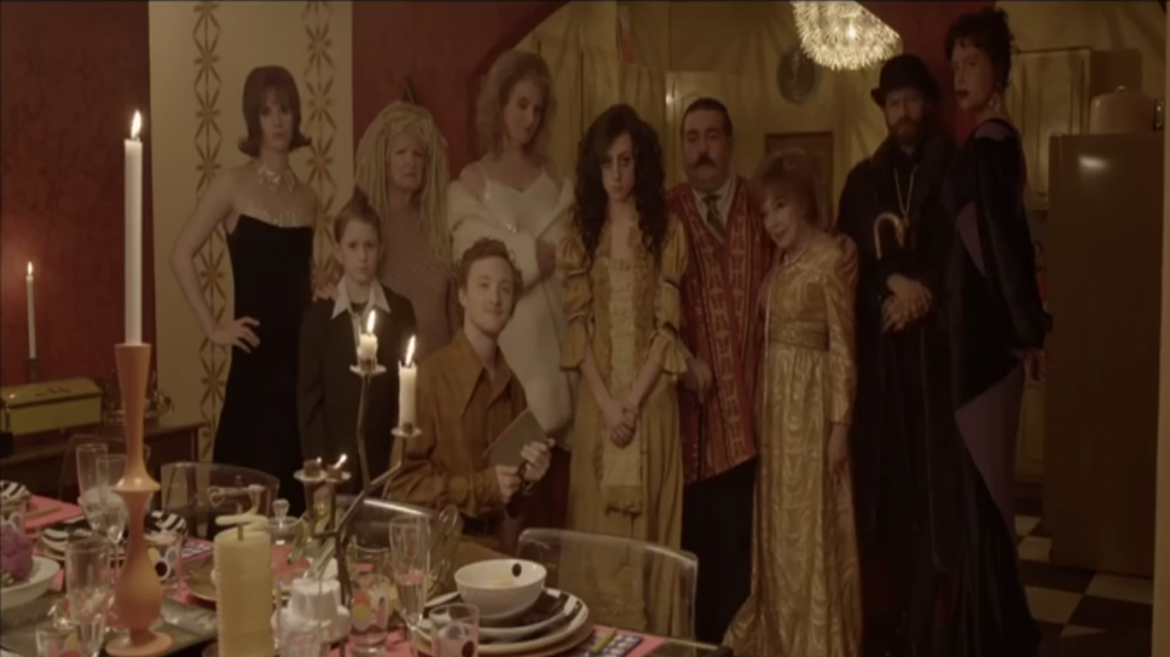
Aimy in a Cage (Movie Review)
Until the day Wes Anderson turns his recent musings on making a horror film into something tangible, Aimy in a Cage might be the closest we come to seeing his unique style in the horror genre. This film features many familiar Anderson-isms, including an affluent family of flamboyant characters, a heavy helping of pastels, scene-setting tracking shots, and a love of title cards. What it lacks is the consistent humor and lovable characters needed to really bring that comparison home.
Aimy in a Cage, which is directed and written by Hooroo Jackson based on his graphic novel, follows Aimy Micry (Allisyn Ashley Arm), an aspiring artist whose wild nature has set her at odds with her fiercely traditional family. Aimy’s antics finally cross the line when she breaks one of her grandmother’s beloved dolls. Shortly thereafter, the family enrolls her in a surgical/conditioning procedure in an attempt to level her out a bit. As all of this is going on, a viral epidemic is sweeping the nation. Eventually, it cuts off Aimy and her family from the outside world as they deal with the aftereffects of her procedure.
Initially, it’s hard to decide who to root for in Aimy in a Cage, even though the film clearly wants us to side with the free-spirited Aimy. The problem is, it doesn’t do much to make her all that likeable. Her actions early on go beyond misunderstood, neurotic artist. Instead, we see her bouncing off the walls, stealing things and in general making herself unpleasant to be around. It’s clear why anyone sharing a living space with her would be interested in seeing her mellow out. Of course, it’s hard to root for the family either, what with them signing Aimy up for a controversial procedure – think A Clockwork Orange but with a sillier hat – and then later tying her to a chair and screaming at her. It’s really not until the film progresses and the family members begin to reveal their true colors that Aimy’s unwieldy behavior is throw into clear perspective.
Since we, as an audience, don’t have a horse in the race for a while, we’re left to just enjoy the film at face value, as an interesting-looking, quirky and occasionally funny fantasy with some horror elements thrown in. In addition to the sharp look, the film also sports a number of strong performances. Like Aimy or lump her, it’s hard to deny the impressive acting chops displayed by Allisyn Ashley Arm in bringing her to life. Also, Crispin Glover stops by for a cup of coffee as a creep dressed as a pimp out to swindle Aimy’s grandmother out of her lifesavings. A case could be made that Glover’s character is completely superfluous to the plot, however, he is still fun to watch in the role.
Jackson’s film seems better suited for the stage then the screen. It’s minimalist both in terms of setting and action. The entire film takes place in two locations: in the apartment of Aimy’s family and very briefly at the hospital where her procedure is conducted. In terms of action, again, there’s not much to speak of. Don’t think too heavily on that viral outbreak. It’s talked about constantly, but it doesn’t come in to play until the very end of the film. Talking is one thing the film has in spades, furthering the idea that it might have worked better as a play.
Aimy in a Cage wants to be a celebration of outsiders – and a critique of a society that will do anything to take those outsiders and force them into the fold. It doesn’t always hit those marks, but its aim gets better as it unspools. In truth, it’s hard to get too high or too low on Aimy in a Cage. It has moments of inspired near-brilliance but its long stretches of dull shouting matches keep it from ever truly shining.

